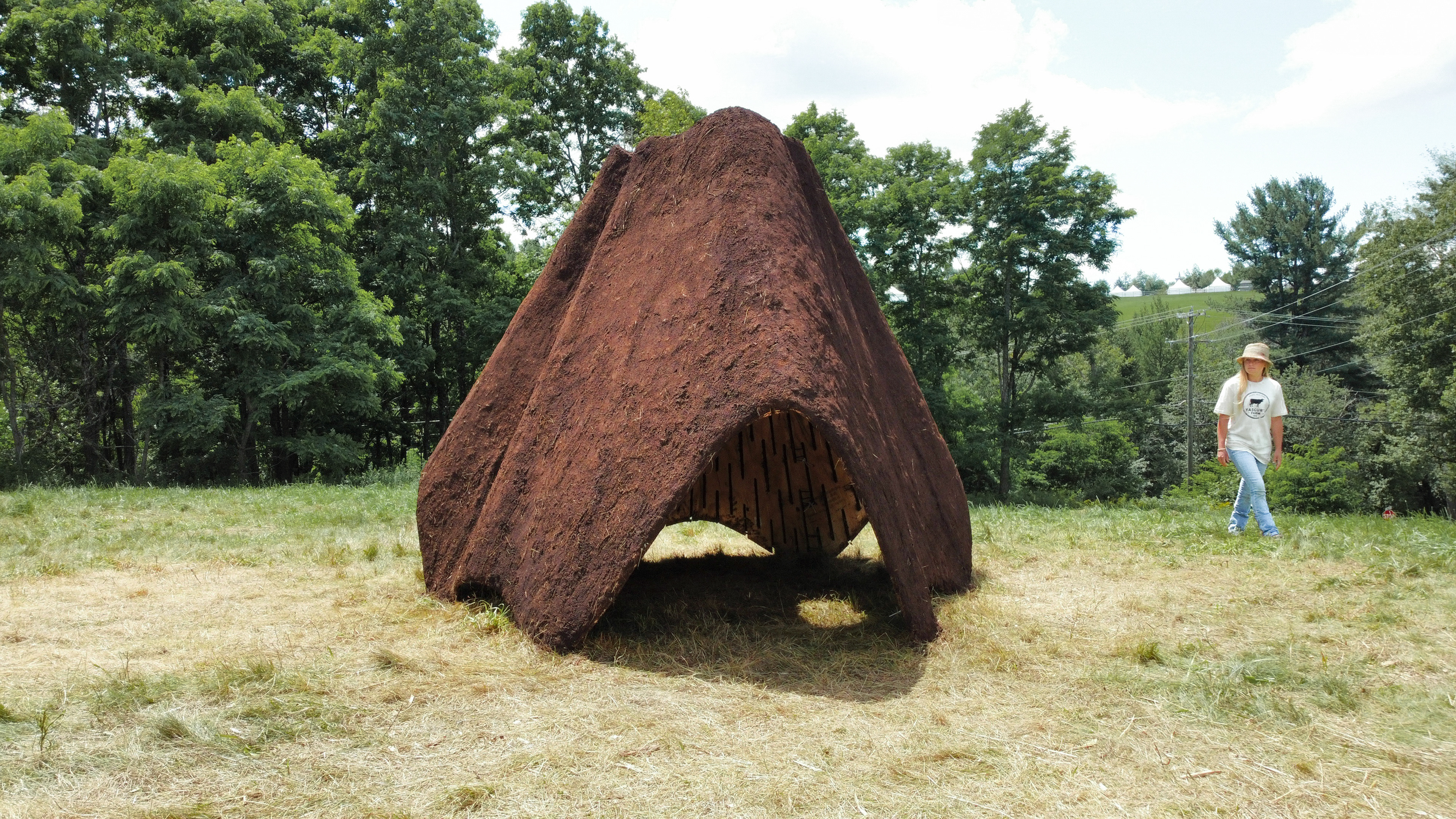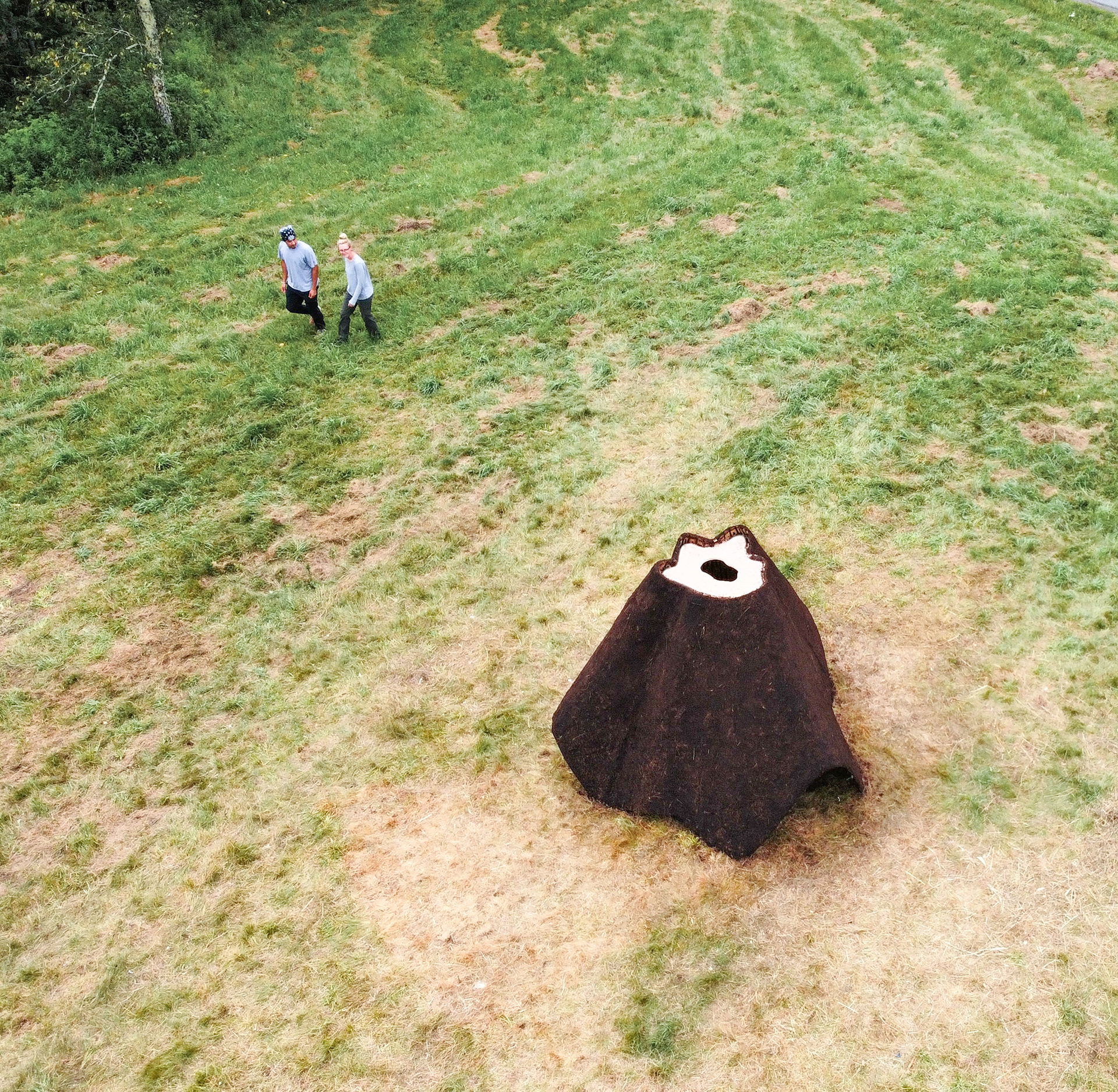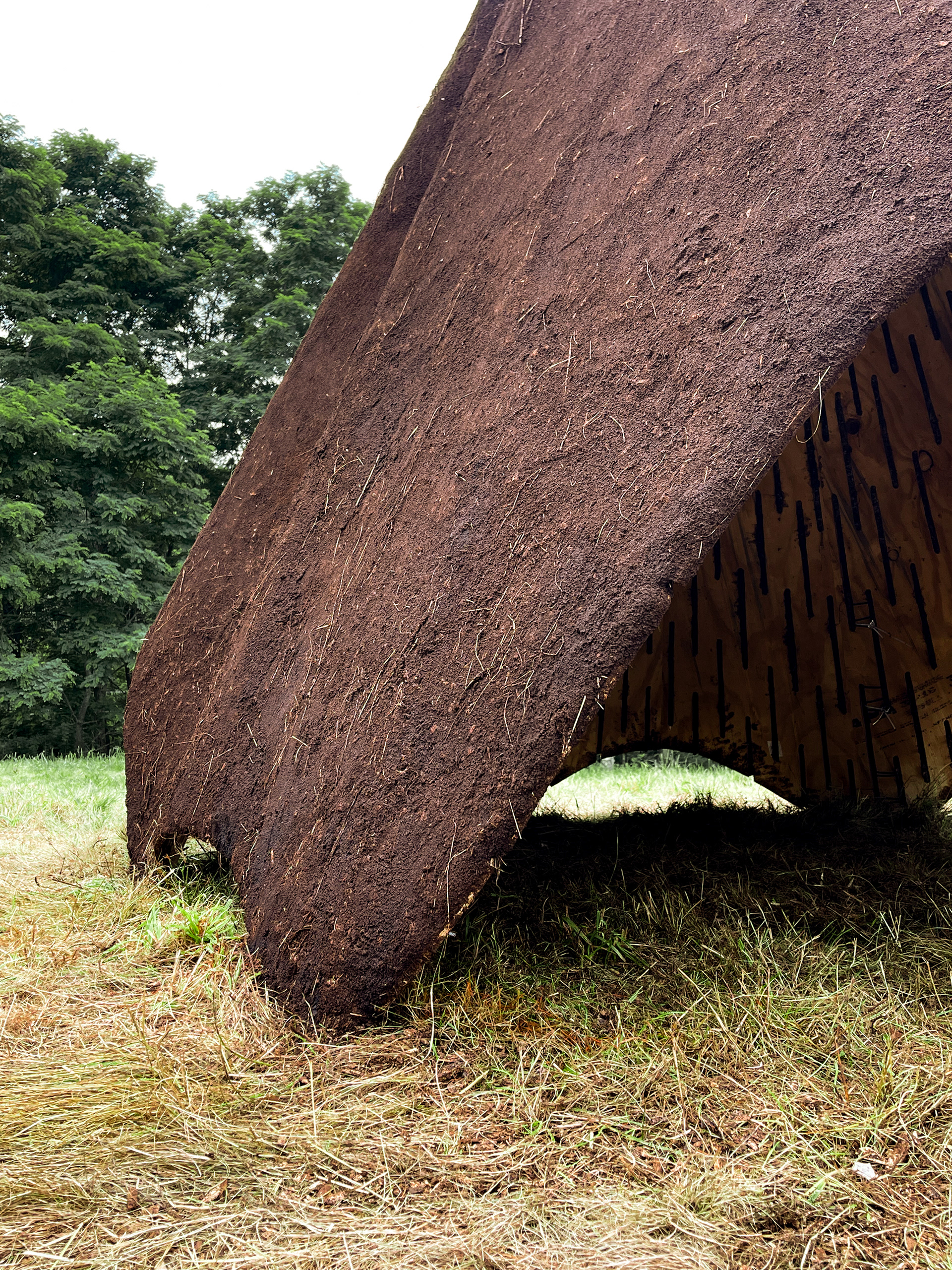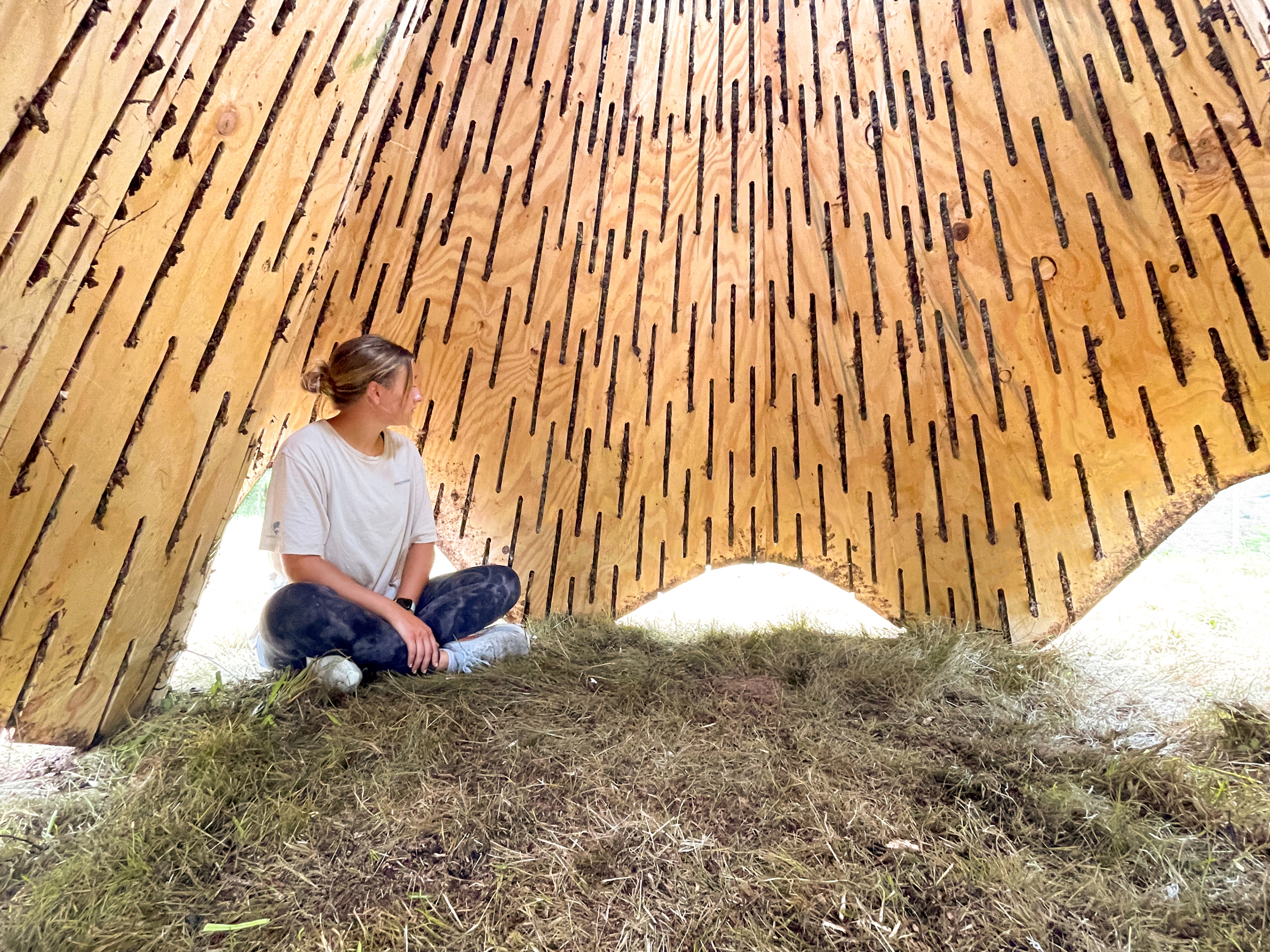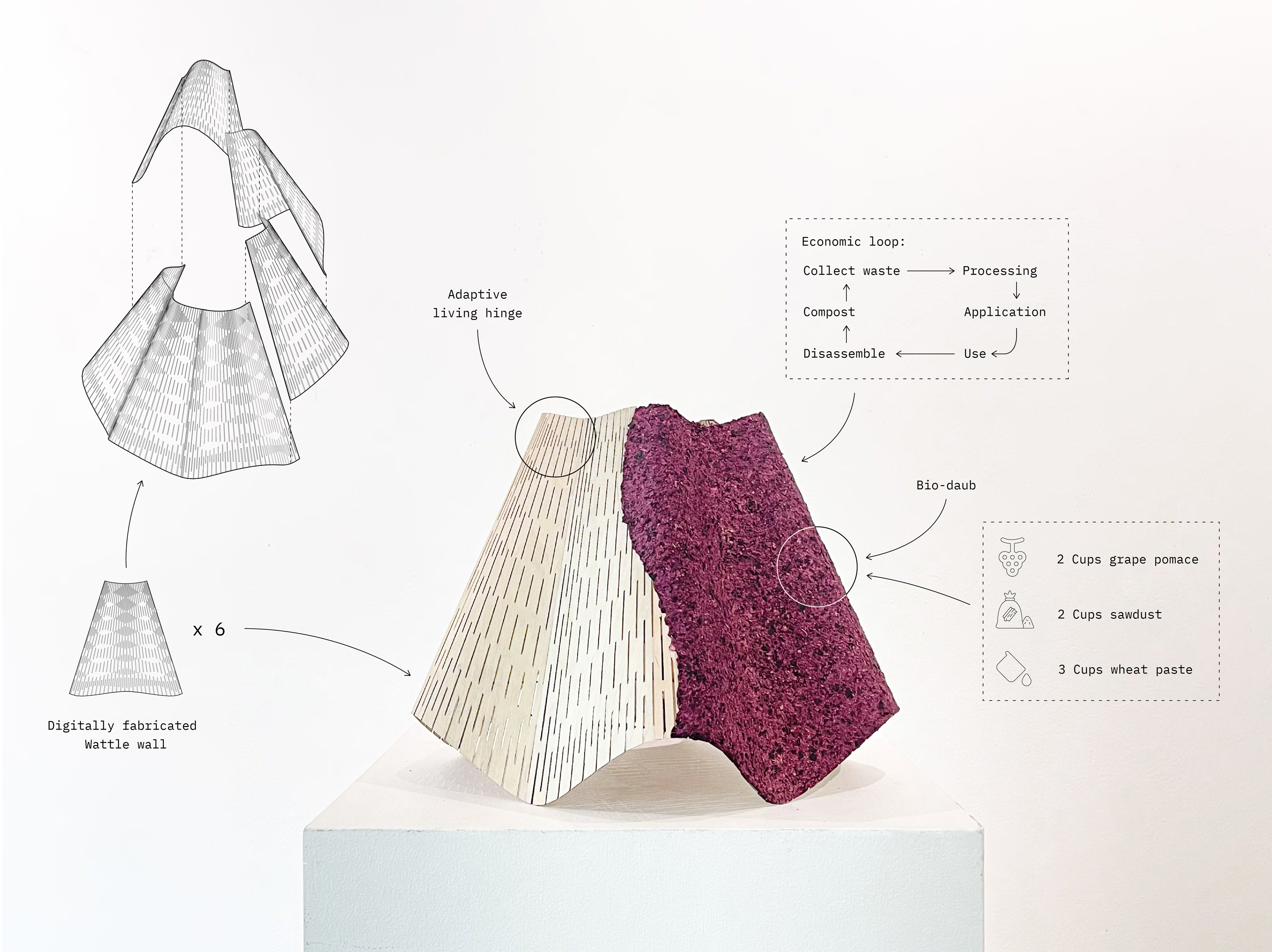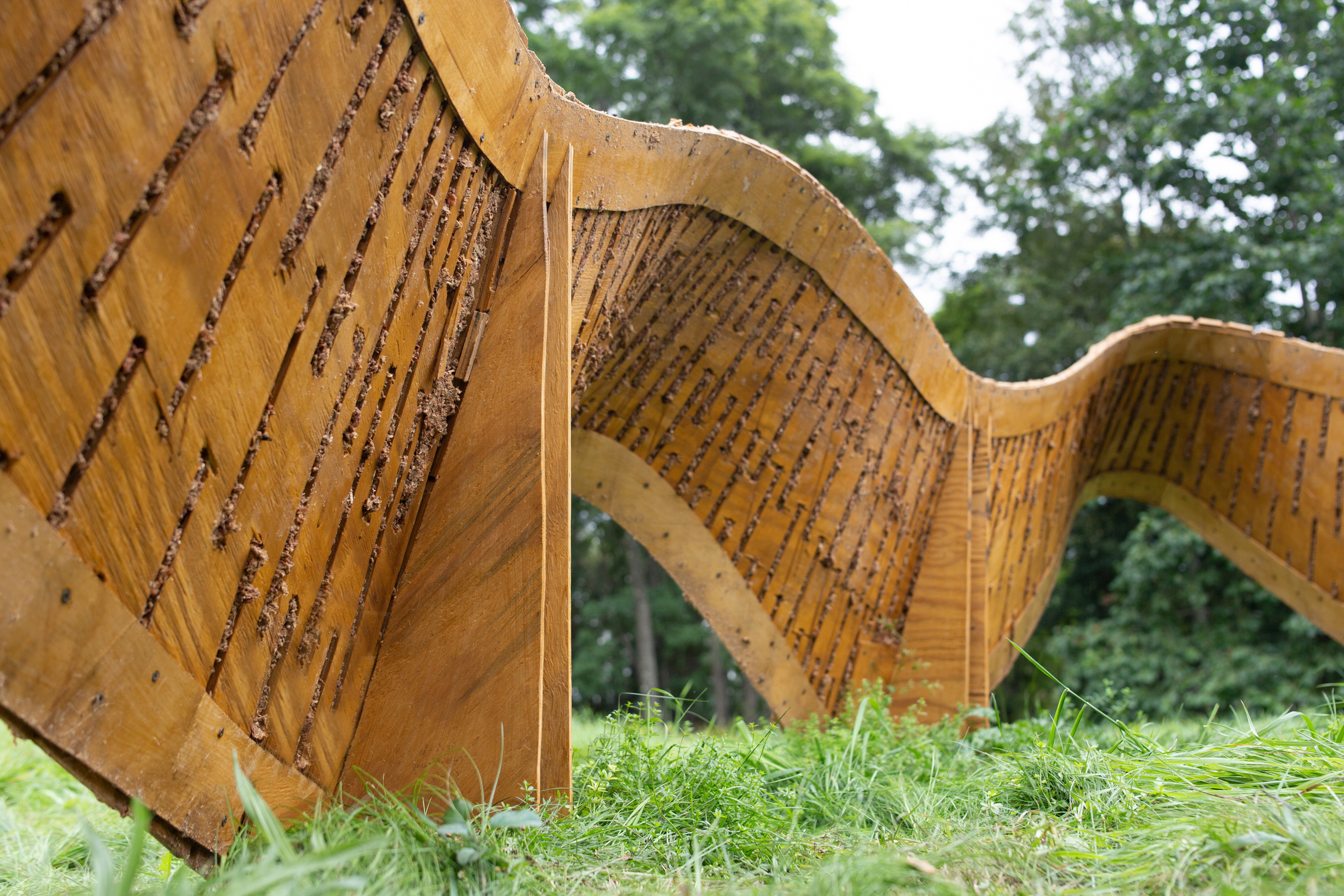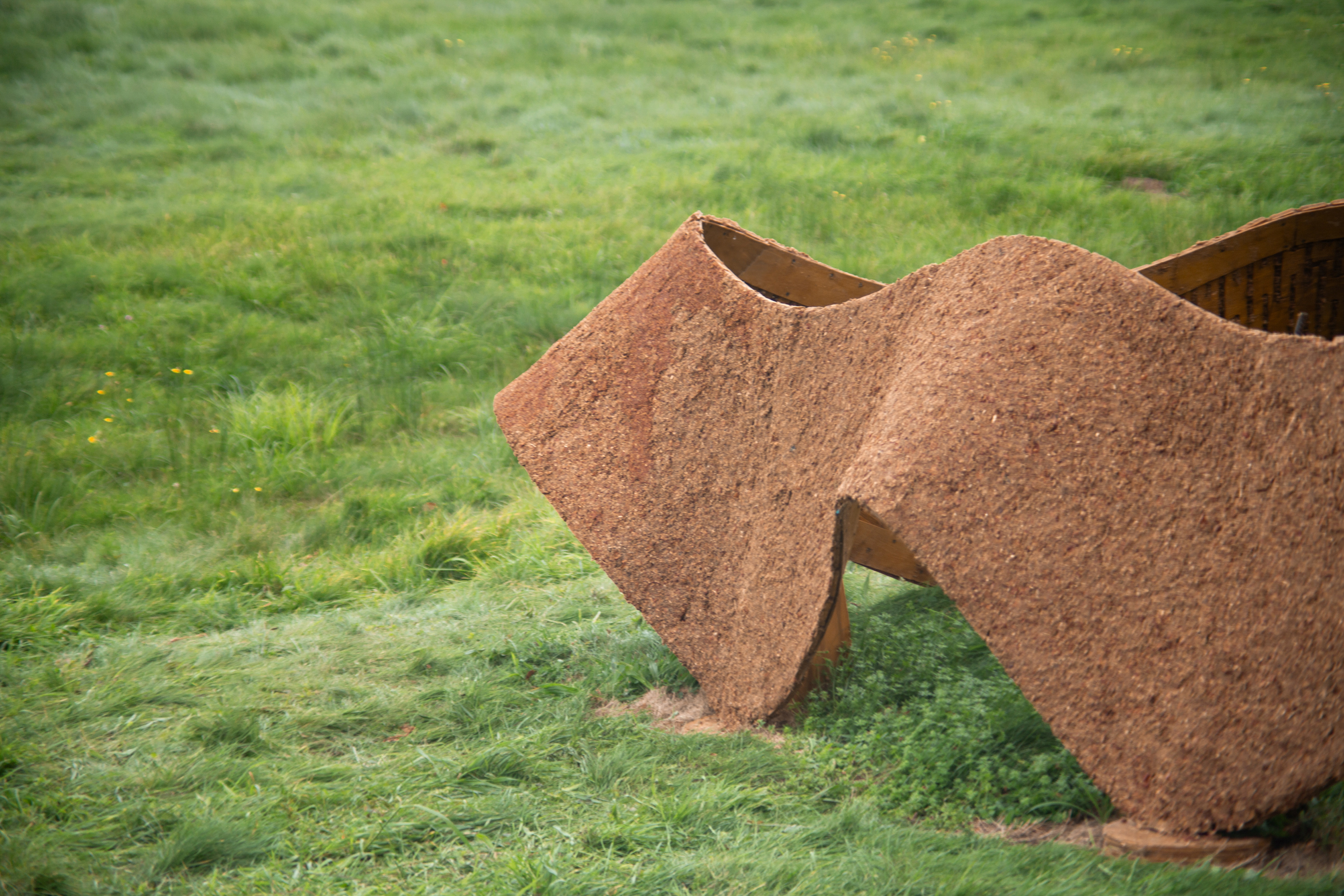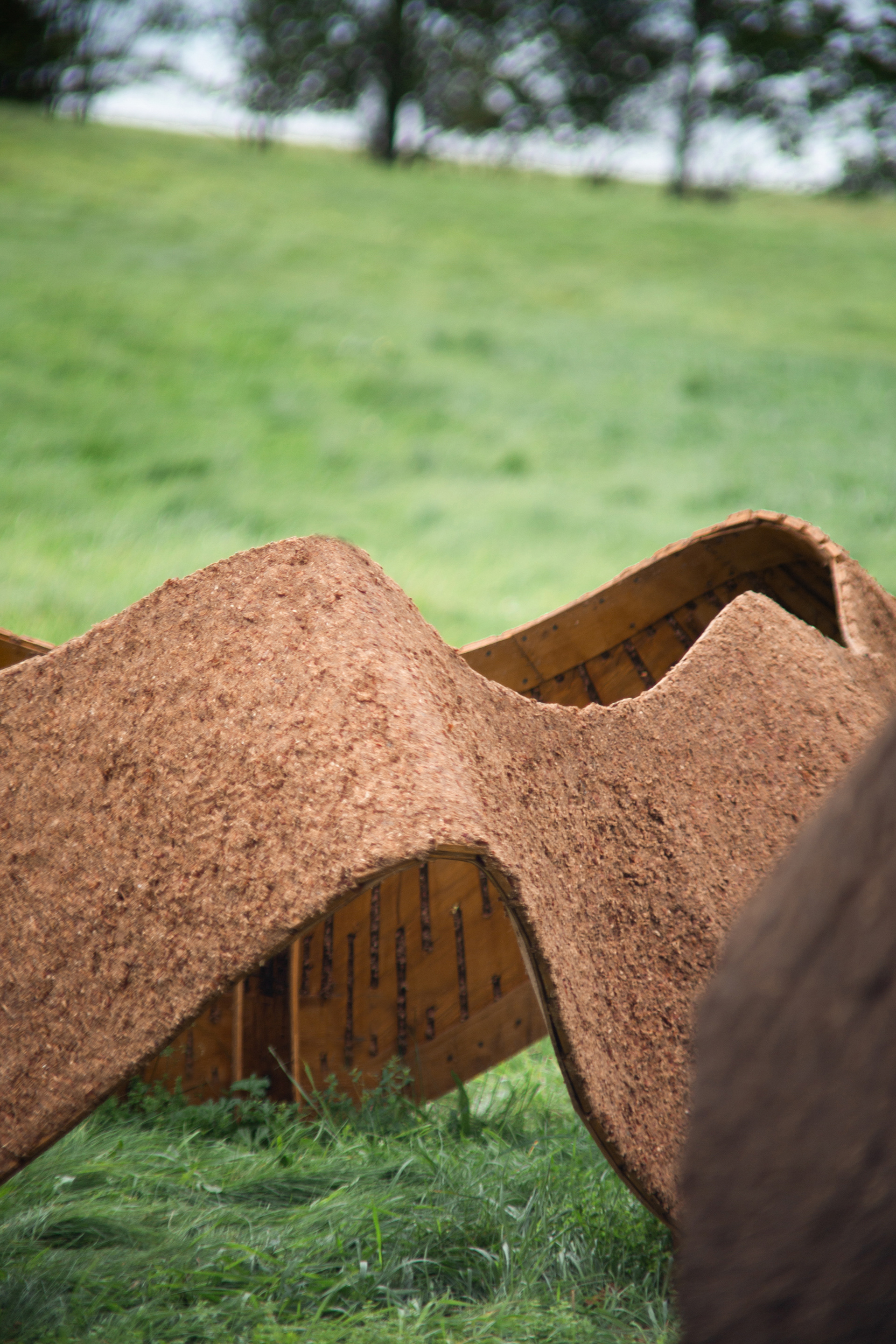JAVA AND JAM
Historic Site of Woodstock, New York
Built for Bethel Woods Art and Architecture Festival 2023
Design - Build
Photographs by Breyden Anderson
Java and Jam are experimental pavilions clad in bio-composite material mixtures composed of spent coffee grounds and white grape skins, respectively. The installation was designed/developed as a contemporary take on wattle-and-daub construction—replacing woven wattle walls with a computationally designed plywood lath and mud daub with alternative materials consisting of bio-waste aggregates, sawdust, and cultivated straw, bound with non-toxic glues. In this regard, the project aims to merge computational design and digital fabrication methodologies with time-tested and place-based techniques and, ultimately, to demonstrate a more critical integration of emerging technologies within the construction ecosystem.
The pavilions were built as part of Bethel Woods Art and Architecture Festival by an international team of students, professionals, and researchers and were exhibited in the campgrounds of Catbird Music Festival located at the historic site of Woodstock. Construction of the installation began with a parametric form-finding exercise implementing custom coding to generate undulating ruled surfaces that were then unrolled digitally and fabricated flat on plywood sheets. Next, the sheets were cut with an adaptive kerf pattern responding to the curvature of the digital geometry—simultaneously informing the bending of the plywood and also creating a permeable lath to hold the bio-composite cladding. Once the form was optimized for its intended site and use, the materials were calibrated using digital fabrication tools before the team coalesced on site, where the wood lath was cut by hand and re-rolled physically. Finally, the formwork was plastered with bio-composite slurries, stabilizing the structures.
Java, the larger of the two pavilions, was rendered with a bio-composite mixture containing spent coffee grounds as the primary aggregate. The coffee grounds, sourced locally from Gimme Coffee! in Ithaca, NY, were mixed with equal parts sawdust and cut straw that the team grew and processed on-site over the course of a season. Lastly, wheat paste (a non-toxic, plant-based adhesive) was added as a binder. Jam, on the other hand, was pasted with a mixture composed primarily of white grape pomace, a byproduct of the wine-making industry consisting of pressed grape skins, seeds, and stalks. The pomace, collected from Damiani Wine Cellars in Burdett, NY, was likewise mixed with portions of sawdust and food-safe PVA glues before being plastered onto the formwork.
The results are two sunbaked pavilions gently resting on the historic grounds of the Woodstock festival like golden-brown ribbons billowing in the breeze. Both Java and Jam, in their entirety, are made from recyclable and/or biodegradable materials processed using a mixture of digital and handcraft techniques. To this point, the structures attempt to reroute research trajectories in automated fabrication and to critically question the use of technology in design—not as a regressive ideology but instead as a way of preserving endangered cultures of building and fostering meaningful labor.


